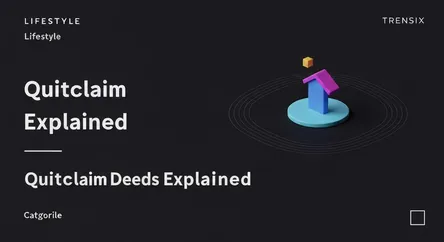Lifestyle
Quitclaim Deeds Explained

Learn about quitclaim deeds, a simple way to transfer property ownership without warranties. Ideal for family transfers but carries risks.
What is it?
A quitclaim deed is a legal document used to transfer interest in real property from one person (the grantor) to another (the grantee). Unlike other deeds, it makes no promises or warranties about the title. The grantor simply transfers whatever ownership interest they currently have—if any—to the grantee. This means if the grantor has no valid interest, the grantee receives nothing and cannot sue the grantor. It's a fast way to transfer property, but it offers the least amount of protection to the buyer or recipient.
Why is it trending?
Quitclaim deeds are popular for their simplicity and speed in non-traditional sales. They are frequently used between family members, such as parents transferring a home to a child, or between divorcing spouses to settle property division. They are also used to add or remove a spouse from a title after marriage or divorce, or to clear up a potential "cloud" or uncertainty on a property's title. The rise in DIY estate planning and desire for low-cost legal solutions has increased their visibility as a straightforward transfer tool.
How does it affect people?
For the person receiving the property (grantee), a quitclaim deed carries significant risk as there is no guarantee the title is clear of liens or other ownership claims. They inherit the property as-is. For the person giving the property (grantor), it's a simple way to relinquish their claim without future liability regarding the title's validity. Because of the lack of protection, these deeds are unsuitable for typical real estate sales. Individuals often use them in situations built on trust, but it's crucial to understand the legal implications and potential risks involved before signing one.